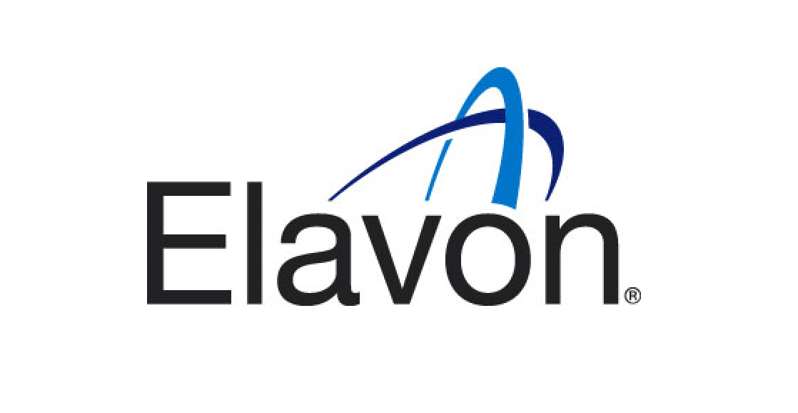Aluminium wire has become an essential material in various industries due to its unique properties and versatile applications. Aluminum wire offers numerous advantages that make it a preferred choice for many professionals and hobbyists alike, from electrical wiring to artistic creations. The purpose of this comprehensive guide is to help you understand why aluminium wire is such a valuable resource by explaining its uses, benefits, and types.
Introduction to Aluminium Wire
Aluminium is the third most abundant element in the Earth’s crust and is widely used in various forms, including wire. Aluminium is known for its excellent conductivity, lightweight nature, and resistance to corrosion. These properties make it suitable for a wide range of applications, from electrical systems to crafting and beyond.
Uses of Aluminium Wire
Electrical Wiring
One of the primary uses of aluminium is in electrical wiring. Aluminium’s conductivity, combined with its lower cost compared to copper, makes it an attractive option for electrical applications. It is commonly used in power transmission lines, electrical grids, and residential wiring. Aluminium wire is particularly advantageous in high-voltage power lines due to its lightweight nature, which reduces the overall weight of the transmission infrastructure.
Construction
In the construction industry, aluminium is used for various purposes, including structural reinforcement and binding. It is often employed in building frameworks, window frames, and roofing materials. Aluminium’s resistance to corrosion ensures the longevity of structures, even in harsh environmental conditions.
Automotive Industry
The automotive industry utilizes aluminium wire for several applications, including electrical systems, wiring harnesses, and battery connections. The lightweight nature of aluminium contributes to improved fuel efficiency and reduced emissions in vehicles. Additionally, aluminium’s thermal conductivity helps dissipate heat generated by electrical components, enhancing overall performance and safety.
Aerospace
In the aerospace industry, weight reduction is critical for achieving optimal performance and fuel efficiency. Aluminium is used in aircraft wiring, control systems, and structural components. Its lightweight properties contribute to the overall reduction in aircraft weight, leading to enhanced fuel economy and increased payload capacity.
Art and Crafts
Aluminium wire is a popular choice among artists and crafters due to its malleability and versatility. It can be easily shaped and molded into intricate designs, making it ideal for sculptures, jewelry, and various decorative items. Artists appreciate aluminium wire’s ability to retain its shape while being lightweight and easy to work with.
Renewable Energy
The renewable energy sector, particularly in solar and wind energy systems, utilizes aluminium wire for various applications. In solar panels, aluminium wire is used for electrical connections and wiring, while in wind turbines, it is employed in generators and power transmission lines. Aluminium’s corrosion resistance ensures the longevity and reliability of renewable energy systems.
Benefits of Aluminium Wire
Lightweight
One of the most significant advantages of aluminium wire is its lightweight nature. Aluminium is approximately one-third the weight of copper, making it easier to handle and install. This characteristic is particularly beneficial in applications where weight reduction is crucial, such as in aerospace and automotive industries.
Cost-Effective
Aluminium wire is generally more cost-effective than copper wire. The lower cost of aluminium, combined with its excellent conductivity, makes it an attractive option for budget-conscious projects. Additionally, aluminium’s lighter weight reduces transportation and installation costs, further enhancing its cost-effectiveness.
Corrosion Resistance
Aluminium naturally forms a protective oxide layer on its surface, which prevents further oxidation and corrosion. This property makes aluminium highly resistant to environmental factors, ensuring its longevity and reliability in various applications. Unlike copper, aluminium does not require additional coatings or treatments to protect against corrosion.
High Conductivity
Although aluminium has slightly lower electrical conductivity than copper, it is still highly efficient for most electrical applications. Aluminium wire can carry the same amount of current as copper wire with a larger diameter, making it a suitable alternative for electrical wiring and power transmission.
Thermal Conductivity
Aluminium has excellent thermal conductivity, which is beneficial in applications where heat dissipation is essential. In electrical systems, aluminium helps dissipate heat generated by electrical currents, reducing the risk of overheating and improving overall safety and performance.
Recyclability
Aluminium is highly recyclable, making it an environmentally friendly choice. Recycling aluminium requires only a fraction of the energy needed to produce new aluminium, reducing the overall carbon footprint. The recyclability of aluminium contributes to sustainable practices and resource conservation.

Types of Aluminium Wire
Bare Aluminium Wire
Bare aluminium wire is uncoated and used in applications where conductivity and corrosion resistance are essential. It is commonly used in electrical power transmission and distribution systems. Bare aluminium wire is available in various sizes and configurations to suit different requirements.
Enameled Aluminium
Enameled aluminium wire, also known as magnet wire, is coated with a thin layer of insulating material. This type of wire is used in electrical coils, transformers, motors, and other applications where electrical insulation is necessary. The enamel coating provides electrical insulation while maintaining the wire’s conductivity and thermal properties.
Alloyed Aluminium Wire
Alloyed aluminium is produced by adding other elements, such as magnesium, silicon, or copper, to enhance its mechanical and electrical properties. These alloys improve the wire’s strength, conductivity, and corrosion resistance, making it suitable for specialized applications in industries like aerospace, automotive, and construction.
Stranded Aluminium
Stranded aluminium wire consists of multiple strands of aluminium twisted together to form a single conductor. This type of wire offers increased flexibility and durability compared to solid aluminium. Stranded aluminium wire is commonly used in applications where flexibility and resistance to bending are essential, such as in wiring harnesses and electrical cables.
Aluminium Clad Steel Wire
Aluminium clad steel wire is a composite wire that combines the strength of steel with the conductivity and corrosion resistance of aluminium. This type of wire is used in applications where high strength and conductivity are required, such as in overhead power transmission lines and grounding systems.
Tinned Aluminium Wire
Tinned aluminium wire is coated with a thin layer of tin to enhance its solderability and corrosion resistance. This type of wire is used in applications where soldering is necessary, such as in electrical connections and circuitry. The tin coating also provides additional protection against environmental factors, ensuring the wire’s longevity.
Choosing the Right Aluminium Wire
When selecting aluminium wire for a specific application, several factors should be considered to ensure optimal performance and safety:
Application Requirements
Determine the specific requirements of the application, such as current carrying capacity, mechanical strength, flexibility, and environmental conditions. This will help in selecting the appropriate type and size of aluminium wire.
Wire Gauge
The wire gauge indicates the diameter of the wire and affects its current carrying capacity and resistance. Choosing the correct wire gauge is essential to ensure the wire can handle the required electrical load without overheating or causing voltage drops.
Insulation
Consider whether the wire requires insulation for electrical safety and performance. Enameled aluminium or tinned aluminium wire may be necessary for applications where electrical insulation or solderability is required.
Environmental Conditions
Evaluate the environmental conditions in which the wire will be used, such as temperature, humidity, and exposure to corrosive elements. Aluminium’s natural corrosion resistance makes it suitable for harsh environments, but additional coatings or treatments may be necessary for specific applications.
Regulatory Standards
Ensure that the selected aluminium wire complies with relevant industry standards and regulations. This is particularly important in electrical and construction applications to ensure safety and reliability.
Aluminium wire is a versatile and valuable material with a wide range of applications across various industries. The lightweight nature, cost-effectiveness, corrosion resistance, and high conductivity of aluminum make it a desirable material for electrical wiring, construction, automotive, aerospace, art, and renewable energy systems. You can make informed decisions when choosing aluminium wire for your project if you understand the different types and their specific benefits. By embracing the advantages of aluminium, we enhance performance and efficiency and contribute to sustainability and resource conservation.
Thank you for taking the time to read our blog. We hope that the information above helped you in the search for the right product for your project.
If you are interesting in learning more about wires, check out our blog on Aluminium Craft Wire or take a look at our range of Stainless Steel Wires.

Nichrome Wire Safety: Top Tips for Working Safely

Best Wire for Electronics Projects

Is Ni80 Wire Suitable for DIY Heating Elements

Wire Grades Explained

How Wire Diameter Affects Strength and Flexibility

How to Cut and Shape Wire for Custom Applications

Can Wire Be Used in 3D Printing?

How Wire Composition Affects Conductivity







